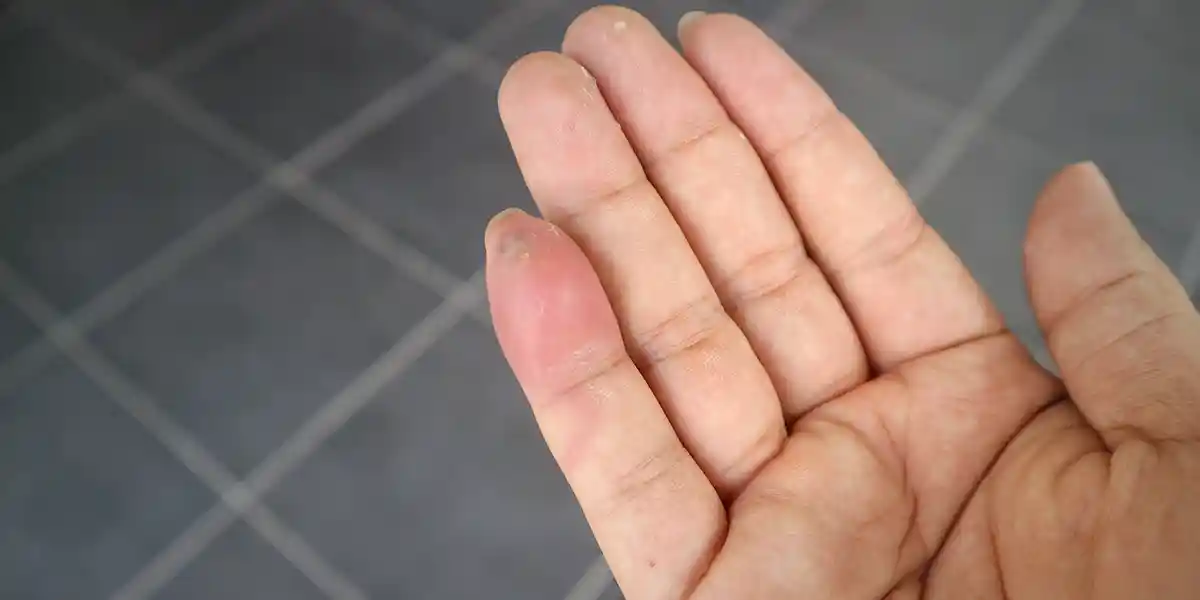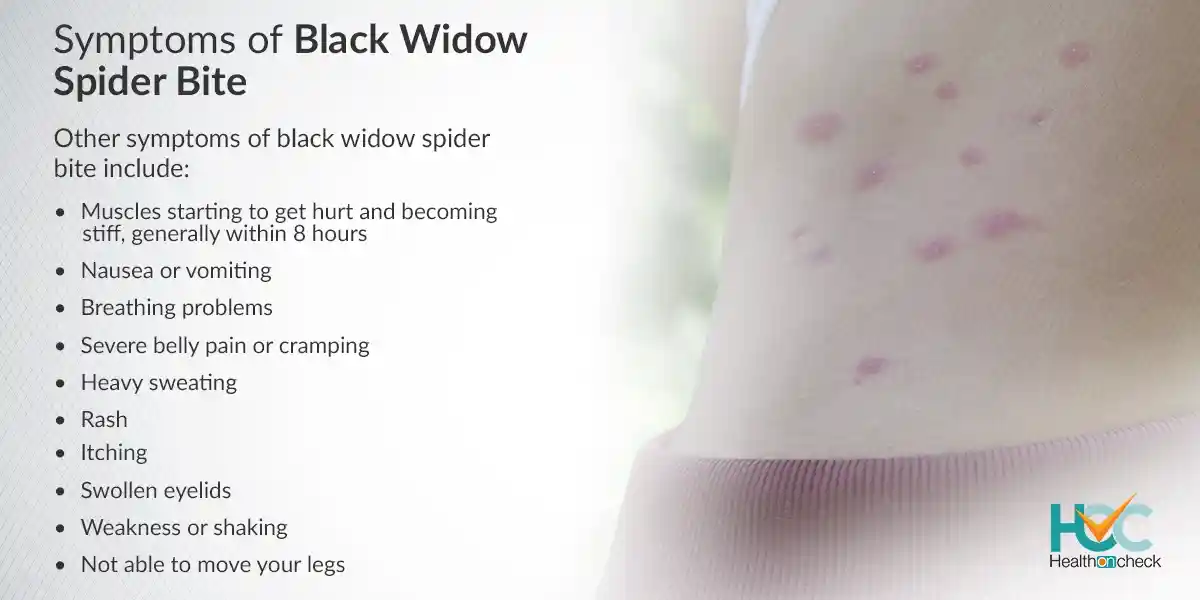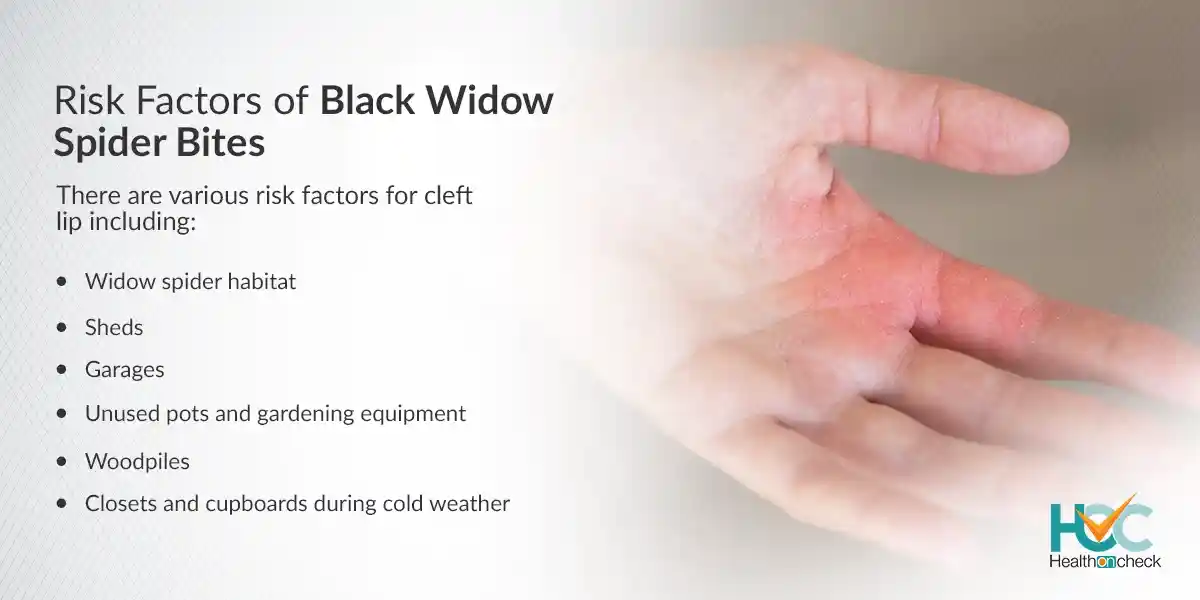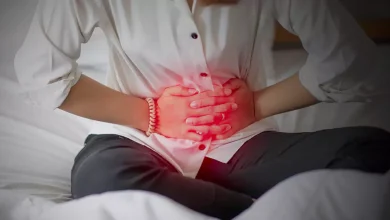What is Black Widow Spider Bite?

Most spider bites do not cause serious complications which are quite rare. When a spider bites you, you may have swelling, redness, and pain in the bite area. But bites from black widow spiders are more serious which can lead to difficulty in breathing, a severe headache, and painful muscle cramps that need immediate medical assistance. The black widow is a medium-sized spider whose size is nearly a half-inch long and they are active at night. They prefer dark corners or crevices, such as garages. They bite only when they feel threatened or disturbed.
What are the Types of Black Widow Spider Bite?
There are two species of black widow spider whose bites can cause serious complications:
The southern black widow: They have got a black, shiny, globe-shaped belly (abdomen). You can recognise it by the red hourglass mark on the underside.
The northern black widow: They have a row of red spots down the middle of the upper surface of its abdomen along with two crosswise bars on the underside. They have markings which can also be yellow or white. The spider usually has brown or red legs.
What are the Symptoms of Black Widow Spider Bite?

The venom of a black widow spider directly affects your nervous system. While some might be slightly affected by it, others might face serious complications. You might experience severe pain, swelling, burning, and redness in the area of the bite. You might even notice two fang marks.
Other symptoms of black widow spider bite include:
- Muscles starting to get hurt and becoming stiff, generally within 8 hours
- Nausea or vomiting
- Breathing problems
- Severe belly pain or cramping
- Heavy sweating
- Rash
- Itching
- Swollen eyelids
- Weakness or shaking
- Not able to move your legs
What are the Causes of Black Widow Spider Bite?
Black widow spiders like to make webs in wood piles, building overhangs (eaves), fences, and outhouses. Serious symptoms due to spider bite happen because of the venom injected by the spider. Symptom severity depends on the amount of venom injected and how sensitive your body is to the venom.
Going to places where the black widow spiders live and disturbing their natural habitat can lead to black widow spider bite. Widow spiders usually like warm climates and dark, dry places.
What are the Risk Factors for Black Widow Spider Bites?

Widow spider habitat: Widow spiders are generally found throughout the United States, barring Alaska, and are more common in the rural South. They’re also found in Europe, Africa, and some places in Asia. They are more active in the warmer months and prefer to live in.
- Sheds
- Garages
- Unused pots and gardening equipment
- Woodpiles
- Closets and cupboards during cold weather
Visiting the areas where these spiders live increases the risk of getting bitten by them. They only attack when disturbed or afraid. It’s better to avoid places where they reside to save yourself from getting bitten. Also, regularly clean places where they are more likely to reside to get rid of these spiders.
What are the Complications of Black Widow Spider Bite?
A bite from a widow spider or recluse spider can be deadly, especially in small children and older adults.
A serious wound from a black widow spider can take weeks or months to heal and can also leave huge scars.
Sometimes they also lead to a skin ulcer (wound) and if it doesn’t heal, you may require surgery.
Some other complications of black widow spider bite include:
- Breathing issues.
- Heart problems.
- High blood pressure.
- Serious muscle pain and cramping.
How is Black Widow Spider Bite Diagnosed?
Your doctor can diagnose a spider bite depending on your history and your signs and symptoms. The diagnosis may involve finding out whether anyone saw a spider bite you, getting an expert to identify the spider, and ruling out other possible causes of the signs and symptoms.
Black widow identification
Some clues for identifying whether the spider that bites you is a black widow spider or not include:
- Shiny black body with long legs
- Red hourglass shape on the belly
- Length of the entire body, including legs, around 1 inch (2.5 cm) across
Your doctor will carefully examine the bite marks which helps them to determine the severity of the bite and symptoms according to which treatment will start.
What are the Treatment Options Available for Black Widow Spider Bites?
If you suspect that you or someone you know is bitten by a black widow, then you should get emergency medical assistance as these bites can be life-threatening, particularly in young children as well as older people.
In the meantime, a few procedures to ease your symptoms and prevent further infection include:
- Washing the area with medicated soap and water.
- Applying a cold washcloth or ice pack wrapped in cloth to the area.
- Having pain relievers such as acetaminophen.
- If the bite is on your arm or leg, elevate it to avert swelling.
- Applying an antibiotic cream or lotion to the bite.
If a black widow bite is leading to serious severe pain or life-threatening symptoms, antivenom might be prescribed by your doctor, which is generally given intravenously. Symptoms generally start to reduce within about 30 minutes of getting the antivenom. Antivenom can lead to serious allergic reactions, so it must be used under strict medical supervision and caution
Living with Black Widow Spider Bite
Most people with spider bites usually feel mild symptoms such as swelling and pain which gradually go away with at-home care.
You might experience more painful and severe symptoms if a black widow spider bites you. With proper medical assistance at the right time, most people recover from venomous spider bites.
Whom to Consult?
You should seek emergency medical help if:
- A dangerous spider, such as a black widow or recluse, bites you.
- You’re not sure whether the bite was from a dangerous spider or a non-venomous spider.
- You are experiencing severe pain, abdominal cramping, or a growing wound at the site of the bite.
- You’re having issues with breathing or swallowing.
- The area of the sore has become red or has red streaks.




